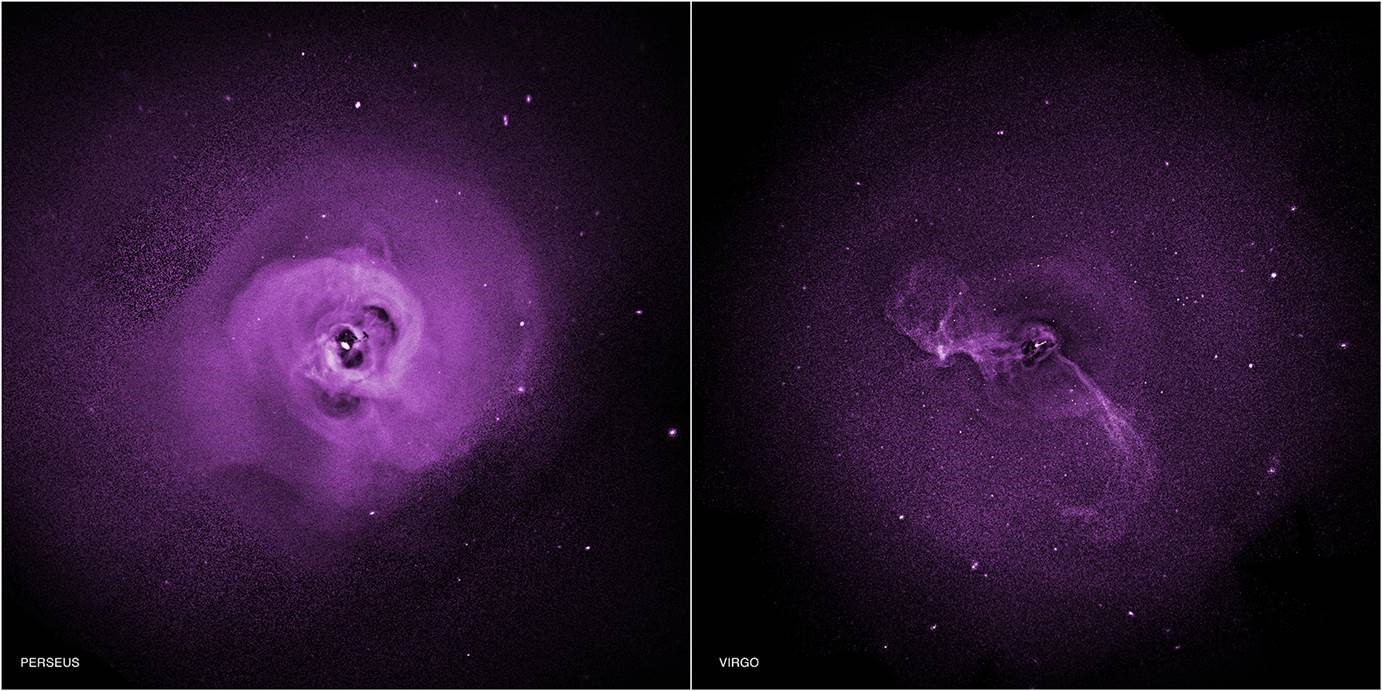Black Hole Turbulence May Stifle Star Birth

The low birth rate for stars in distant galaxy clusters is one of astronomy's long-standing mysteries. But scientists now have a new culprit in the case: cosmic turbulence from black holes.
The discovery, made by astronomers using NASA's Chandra X-Ray Observatory, suggests that black holes make it hard for new stars to form in gas-rich galaxy clusters. It may also explain why more infant stars aren’t present in these otherwise fertile areas, researchers said.
"We knew that somehow the gas in clusters is being heated to prevent it cooling and forming stars. The question was exactly how," said the study's lead author Irina Zhuravleva, of Stanford University in Palo Alto, California, in a NASA statement. Zhuravleva and her colleagues suspect they "may have found evidence that the heat is channeled from turbulent motions." [The X-ray Universe Seen by the Chandra Observatory (Images)]
Zhuravleva's team used the Chandra X-ray Observatory to study the Virgo and Perseus galaxy clusters, which are brimming with thousands of galaxies and even more stars. The Virgo galaxy cluster alone contains about 2,000 galaxies — the largest of which contain roughly 1 trillion stars.
But despite their sheer size, the most massive element of the galactic clusters are the gas that lives in the spaces between galaxies. Over time, these gas clouds should naturally cool down and become prime areas of star formation. But in most galaxies, the gas is hotter than predicted. Since this hot gas can't coalesce into stars, star births remain low, researchers said.
Turbulence usually refers to chaotic changes in the pressure and speed of a material. A fast moving ship, for example, can create turbulence on an otherwise calm body of water. In the interstellar gas clouds, the turbulence is believed to originate with supermassive black holes, which spit out violent jets of matter. The jets carve out deep cavities in the gas and generate strong turbulence, which gets passed into the gas cloud surrounding the cavity.
“Our work gives us an estimate of how much turbulence is generated in these clusters,” said one of the study’s authors, Alexander Schekochihin of the University of Oxford in the United Kingdom, in the press release. “From what we’ve determined so far, there’s enough turbulence to balance the cooling of the gas.”
Breaking space news, the latest updates on rocket launches, skywatching events and more!
Turbulence in galaxy cluster gas clouds could come from other major events, like two galaxies merging together. But the researchers believe black hole ejections are the most common source of the turbulence that ultimately hinders star birth.
Follow Calla Cofield @callacofield. Follow us @Spacedotcom, Facebook and Google+. Original article on Space.com.

Calla Cofield joined Space.com's crew in October 2014. She enjoys writing about black holes, exploding stars, ripples in space-time, science in comic books, and all the mysteries of the cosmos. Prior to joining Space.com Calla worked as a freelance writer, with her work appearing in APS News, Symmetry magazine, Scientific American, Nature News, Physics World, and others. From 2010 to 2014 she was a producer for The Physics Central Podcast. Previously, Calla worked at the American Museum of Natural History in New York City (hands down the best office building ever) and SLAC National Accelerator Laboratory in California. Calla studied physics at the University of Massachusetts, Amherst and is originally from Sandy, Utah. In 2018, Calla left Space.com to join NASA's Jet Propulsion Laboratory media team where she oversees astronomy, physics, exoplanets and the Cold Atom Lab mission. She has been underground at three of the largest particle accelerators in the world and would really like to know what the heck dark matter is. Contact Calla via: E-Mail – Twitter

